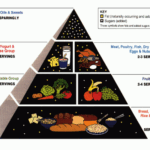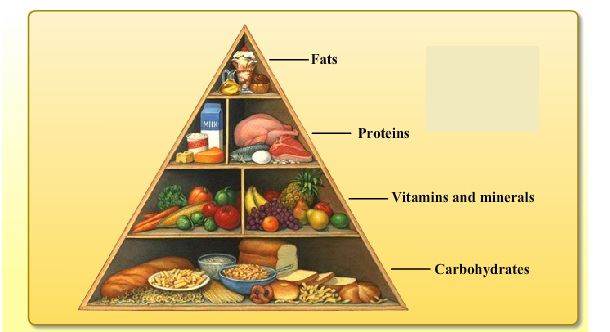Components of Food and Their Sources
Food is any substance that provides nutrients to the body. Different types of foods are required for various activities. Dieticians recommend a balanced diet to maintain health. The main components of food are carbohydrates, proteins and fats.
Carbohydrates that are made up of one molecule are called monosaccharides such as glucose, fructose and galactose. Grains, sugary foods, honey, starchy vegetables contain these carbohydrate.
Carbohydrates
Carbohydrates are a major source of energy and can be found in foods like fruits, vegetables, milk and breads. However, some types of carbohydrate-rich foods are high in kilojoules and can contribute to weight gain and poor health. These include snack foods such as biscuits, sauces and confectionery.
Most carbohydrate should come from complex carbohydrates (starches) and naturally occurring sugars, rather than refined sugars and added sugars. Refined or simple sugars are broken down quickly in the body and cause unhealthy spikes in blood sugar levels. In contrast, complex sugars, made from sugar molecules that are strung together in long chains, are digested more slowly and provide a more gradual release of glucose into the bloodstream.
The best sources of carbohydrates are unprocessed foods, such as whole grains, beans, fruit and vegetables. These foods are rich in vitamins, minerals and dietary fibre. In contrast, processed foods, such as cakes, cookies, chips and soft drinks, are typically high in kilojoules, saturated fats, added sugars and sodium. These foods should be eaten sparingly. They can cause unwanted weight gain and raise triglyceride levels, which is linked to heart disease.
Proteins
Proteins are large, complex molecules that are involved in almost all of the chemical reactions that keep our bodies working. They are made up of long chains of amino acid residues arranged in a sequence determined by the DNA sequence of the gene that encodes the protein.
Proteins have structural, regulatory, contractile, and transport functions. For example, hemoglobin transports oxygen in the blood. Proteins also make up cytoskeletal structures that support the structure of cells, and actin and myosin form muscles. Proteins also serve as enzymes that catalyze metabolic reactions, and as antibodies and hormones.
Amino acids are the building blocks of proteins, and they come in many different forms. Some amino acids are essential, meaning they must be supplied in the diet because our bodies cannot manufacture them. Essential amino acids include valine, isoleucine, and leucine. Other amino acids are non-essential, meaning they can be produced by our bodies. Proteins have a wide range of shapes and molecular weights, with some being globular (such as hemoglobin) while others are fibrous in nature (such as collagen). Proteins can be categorized as either polar or non-polar and charged or uncharged.
Fats
Fats (lipids) are a major source of energy in the diet, providing 9 calories per gram consumed, compared to 4 kcal/g for carbohydrates and proteins. Lipids are also important building blocks of the cell membrane, and help with the absorption of fat-soluble vitamins such as A, D, E and K.
There are two types of dietary fats: saturated and unsaturated. Saturated fats are solid at room temperature, and are found mainly in meats and dairy products. Unsaturated fats are liquid at room temperature, and are found in vegetable oils, nuts and fish.
Monounsaturated fats (MUFAs) have one carbon double bond (“mono” = one). MUFAs are a key component of the Mediterranean diet. Sources of MUFAs include olive, canola and safflower oil, avocados, peanut and sesame seeds, and nuts.
Polyunsaturated fats have more than one carbon double bond (“poly” = many). PUFAs are the main source of omega-3 fatty acids eicosapentaenoic acid (EPA) and docosahexaenoic acid (DHA), which are important for brain development. EPA and DHA can be found in cold-water fatty fish such as salmon, herring, sardines and mackerel.
Vitamins
Vitamins are special organic substances that humans need in small amounts to stay healthy. They differ from other nutrients in that they cannot be synthesized by higher forms of life and must be obtained from food.
Vitamins have specific jobs, like helping the body resist infections and metabolize proteins. The most important vitamins are vitamins A, C, E, and K.
They are found in a variety of foods, including leafy vegetables and oranges. Vitamin A is necessary for good vision and mucous membrane health, growth and development, immune function, and the formation of keratin in hair and skin. It also helps metabolize carbohydrates and fats. Good sources include fortified milk, egg yolks, liver, and fatty fish.
Other vitamins, like niacin and B6, help the body use and produce energy. They also make red blood cells and form choline, which helps the brain and nervous system function properly. They can be found in eggs, chicken, dairy products, meats, whole grains, and legumes. Some people may need supplements to get enough niacin and B6. The upper intake limits for these vitamins are fairly high.
Minerals
Minerals are inorganic substances that occur naturally and have a definite chemical composition and ordered internal structure. They can be recognised by their hardness, lustre and other characteristics. Most minerals are crystals.
They are homogenous solids and can only be separated into simpler chemical compounds by physical means – for example, by crushing or melting. Some minerals are made up of just one element, such as metals and simple ores, while others are composed of multiple elements. For example, quartz (silicon dioxide) consists of silicon and oxygen atoms, while siderite is iron carbonate and halite is rock salt.
Minerals are important for the body and can be found in food such as leafy vegetables, meat, dairy products and nuts. They are essential for some body functions such as building strong bones and teeth and regulating the heartbeat. They are also needed to produce energy through cellular respiration. Most people get the minerals they need from their diet, although some may take supplements to boost their intake. Examples of minerals include calcium (Ca), phosphorus (P), magnesium (Mg) and sodium (Na). Other minerals called trace minerals are necessary in small amounts, such as iron (Fe), zinc (Zn) and copper (Cu). They can be found in food as well as in mineral supplements.







